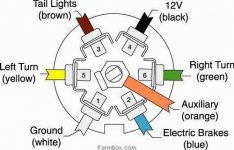Solar installation
I bought a 2019 Pioneer RG22. It doesn’t have solar prep. And I am not too fond of drilling holes into my new camper. While going thru the documentation and after asking some questions I realized that my tow vehicle charges the house battery.
So here is my idea:
connect my 100 watt (expandable to 400 watt) Harbor Fright solar panel to a charge controller and wire the controller into the #1 & #4 & #5 (white and black and red) of a male 7pin tow receptacle which I can then plug into the campers 7pin plug.
Since the Red (#5) goes to the converter I’m not sure if I even need to pre-wire a charge controller before going into the camper. These are #14 wires I believe but that should be sufficient for charging from solar.
Any ideas about flaws for this setup? Improvements?
I bought a 2019 Pioneer RG22. It doesn’t have solar prep. And I am not too fond of drilling holes into my new camper. While going thru the documentation and after asking some questions I realized that my tow vehicle charges the house battery.
So here is my idea:
connect my 100 watt (expandable to 400 watt) Harbor Fright solar panel to a charge controller and wire the controller into the #1 & #4 & #5 (white and black and red) of a male 7pin tow receptacle which I can then plug into the campers 7pin plug.
Since the Red (#5) goes to the converter I’m not sure if I even need to pre-wire a charge controller before going into the camper. These are #14 wires I believe but that should be sufficient for charging from solar.
Any ideas about flaws for this setup? Improvements?


